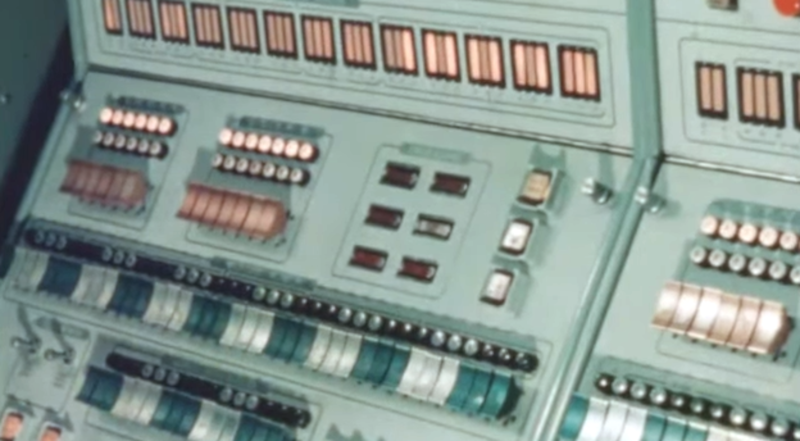Retrotechtacular: Military Graphics in the 1960s [Hackaday]

While you might think the military doesn’t have a sense of humor with names. Take the AN/MSQ-19 “automated tactical operations central” for example. (Video, embedded below.) But then, when you find out that the truck-sized computer at the heart of it was MOBIDIC — yes, that’s pronounced Moby Dick — you know someone had a good chuckle somewhere. The video below was a promotional video from the early 1960s, and although it shows the unit in operation, it was most likely a mockup and not fully functional.
The MOBIDIC program ran from 1960-1964 and cost a whopping $25 million in 1960-era money. In 1964, testing revealed the system was too unwieldy, requiring at least five tractor-trailers, eight generators, portable buildings, and several large trucks to move around.
Graphical Output?
We doubt the system could have been very reliable, either. It relied on a Rube Golbergesque system to record and file transparencies that were projected on maps. These transparencies were stored in some sort of automatic filing system and carried around in pneumatic tubes. No kidding, watch the video. You can’t make this stuff up.
A 1966 report from an Army research lab discusses using parts of AN/MSQ-19 in a laboratory, so at least some of the high-tech equipment did find a home. The designers of the system weren’t wrong, they were just a little early and needed better graphics capabilities along with smaller computers. The MOBIDIC weighed about 12,000 pounds, although at least the “B” version used by this project did have dual CPUs! There was a unique input device called a Grafton which was sort of like a modern digitizer. Sort of.
MOBIDIC
The MOBIDIC was built late in the 1950s as part of a larger Army strategy to computerize. You can watch a video about the solid-state computer in the second video below. It even includes a contemporary film about the computer. The base machine had 32,000 transistors, 6,000 diodes, and 311,200 bits of magnetic core. That’s less than 40 kB, to save you the math, and the narrator on the Army’s film calls that a “huge memory.” Perhaps he was really referring to the giant tape drives, which could hold about 10 MB. Not huge by today’s standards, of course, but still.
The trailer/computer had six tape drives, several cabinets for memory with space reserved for future upgrades, and an air conditioner. With power and extra equipment, there were actually four trailers together. There were several variants of these computers produced, and some saw actual use, particularly in Germany. The National Bureau of Standards bought the MOBIDIC-B used in this system and you can read about its retirement in 1973.
They Simply Fade Away
Sylvania, the MOBIDIC’s developer, also produced the 9400, a commercial variant of the machine. What was it like to program? Well, you used BASICPAC, which didn’t look at all like BASIC, if you were wondering.
Looking back over the 60-some-odd years between this system and our modern computers, you could choose to be amused at how primitive the systems were. Or, you can stand in awe that people could look at this new technology and see what could be possible, even if they weren’t quite able to get there right away.

![retrotechtacular:-military-graphics-in-the-1960s-[hackaday]](https://i0.wp.com/upmytech.com/wp-content/uploads/2023/03/114418-retrotechtacular-military-graphics-in-the-1960s-hackaday.png?resize=800%2C441&ssl=1)